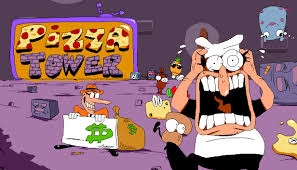pizza tower is an indie game that has garnered attention for its unique art style, fast-paced action, and most notably, its intricate gameplay mechanics. While it may appear straightforward at first glance, the complexity of "Pizza Tower" quickly reveals itself as players delve deeper into the game. This article explores the multifaceted nature of "Pizza Tower" and what makes it a challenging and rewarding experience for gamers.
A High-Octane Platformer with Depth
At its core, "Pizza Tower" is a platformer that draws inspiration from classic games of the 1990s, blending elements from titles like "Wario Land" and "Sonic the Hedgehog." However, "Pizza Tower" isn't just a simple homage; it introduces a range of mechanics that add layers of complexity to the gameplay.
Speed and Momentum: A Key to Mastery
One of the defining features of "Pizza Tower" is its emphasis on speed and momentum. The protagonist, Peppino, is a pizza chef with the ability to dash, jump, and wall-run at breakneck speeds. Mastering these mechanics is essential for progressing through the game. The challenge lies in maintaining momentum while navigating increasingly difficult levels filled with obstacles, enemies, and hidden paths. Players must learn how to chain moves together fluidly, turning the game into a thrilling dance of precision and timing.
Combo System: Encouraging Creativity
Another layer of complexity in "Pizza Tower" is the combo system. Players are rewarded for stringing together actions without interruption, such as defeating enemies, collecting items, and breaking through obstacles. The higher the combo, the more points are accumulated, leading to better scores and rewards. This system encourages players to experiment with different strategies and explore levels thoroughly, as finding the optimal path can lead to massive combos and high scores.
Environmental Interactions: Think on Your Feet
The levels in "Pizza Tower" are designed with a variety of environmental elements that can either aid or hinder progress. From crumbling platforms to switches that open new areas, players must think on their feet and adapt to the ever-changing landscape. This dynamic environment adds another layer of challenge, requiring quick reflexes and careful planning to overcome.
Enemies and Boss Battles: A Test of Skill
"Pizza Tower" also features a diverse array of enemies and boss battles that test the player's skills. Each enemy type has its own behavior patterns and weaknesses, forcing players to learn and adapt their tactics. Boss battles, in particular, are complex encounters that require a deep understanding of the game's mechanics. These fights are often multi-phased, demanding precision, timing, and strategic thinking to defeat.
The Learning Curve: Accessible Yet Challenging
While "Pizza Tower" offers a steep learning curve, it remains accessible to players of all skill levels. The game gradually introduces new mechanics and challenges, allowing players to build their skills over time. However, mastering the game requires dedication and a willingness to push through difficult sections. This balance between accessibility and challenge is one of the reasons why "Pizza Tower" has garnered such a dedicated fanbase.
Conclusion
The complexity of "Pizza Tower" lies not just in its fast-paced gameplay but also in the depth of its mechanics. From mastering momentum and combos to navigating dynamic environments and defeating challenging bosses, "Pizza Tower" offers a rich and rewarding experience for players who are willing to dive deep into its intricacies. Whether you're a seasoned platformer enthusiast or a newcomer looking for a challenge, "Pizza Tower" delivers a unique and engaging gaming experience that is well worth exploring.



